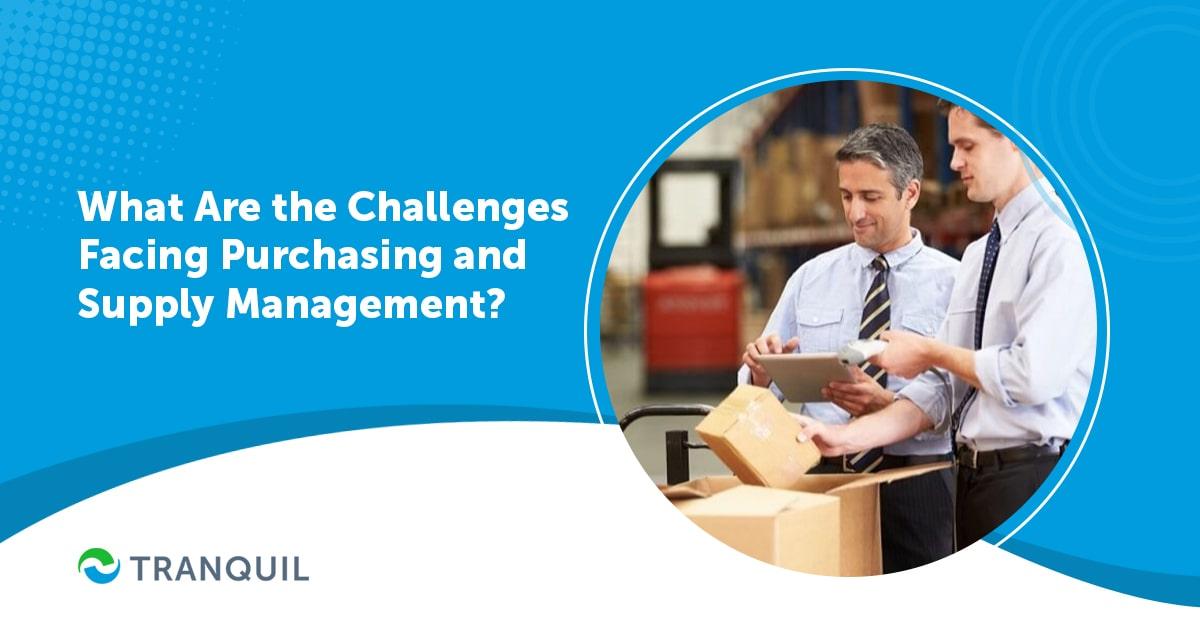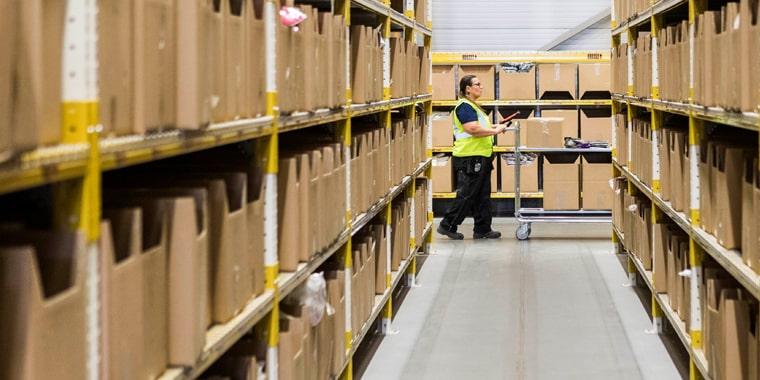
Procurement as a function has been evolving tremendously and has gained immense credibility not just within the business but with stakeholders as well.
However, it has also opened the doors to new challenges, while retaining most of the existing ones.
The supply chain management has also undergone a radical transformation, again bringing its own set of issues.
While it’s true that different industries face different challenges, there are a few challenges facing purchasing and supply management common to all industries, and sometimes even all businesses.
Without further ado, let us look at the procurement challenges first:
The COVID-19 pandemic is forcing procurement managers to think outside the box; without innovative strategies, it would be impossible to manage sourcing, suppliers, and supply chains.
Buying from suppliers located far away can be problematic, with lockdowns and other restrictions; this would necessitate inculcating better negotiation skills to get good deals from local suppliers, and ensure adequate supplies to meet production demands and so on.
ALSO READ: How to Manage Your Business from Home in Pandemic Situation?

Many theories were laid to rest by the pandemic, especially the risk management protocols followed previously, as they proved to be woefully inadequate.
Procurement and supply chain management today needs to focus on a wider scope of risks including:
With awareness regarding sustainable growth, ethical production, and so on growing among consumers globally, these challenges need to be addressed appropriately:
ALSO READ: Factors for a Successful ERP Implementation
This is yet another of the purchasing challenges gaining importance across the world.
Procurement today attempts to level the playing field for diverse suppliers to compete with one another, and this fosters innovation and competitive pricing.
Identifying the vendors who fit the diversity criteria, especially in the absence of specific policy with regards to diversity identification in company reports or public documents.
Companies are modifying policies regarding terms of payments so that the agreements are optimized for vendors.
Options to finance the supply chain and offering discounts on invoices are preferred over longer payment tenures.
These steps need to be taken to ensure that the supply base stays with you so that you can have uninterrupted production or trading.
Managing relationships with vendors is one of the most effective ways to maintain your working capital.
ALSO READ: Benefits of ERP for Accounting and Financial Management

Forging bonds with suppliers has enabled them to coax innovation from the supply side. Startup suppliers are one such group.
Thanks to the reduced terms and conditions several startups have been encouraged to get into the business.
To integrate innovation, these steps need to be focused on:
The pandemic helped organizations to realize the importance of going digital to boost overall efficiency, reduce expenses, and increase revenues.
ERP systems like Tranquil have successfully helped numerous businesses to enhance productivity through automation and streamlining of processes.
Cloud-based apps including ERP are less expensive than conventionally deployed apps, adding to the convenience of businesses.
Other tools include data visualization tools, BI and analytics, CRM, robotic process automation or RPA, and others.
ALSO READ: BI vs ERP

Appropriate communication is important in keeping internal stakeholders on your side so that they are convinced about the procurement strategy, vendor, pricing, and so on.
Without proper stakeholder management, your procurement strategy could fail.
Developing and maintaining relationships is important; to achieve this you can utilize techniques of stakeholder analysis to identify the important ones, and follow these steps to foster strong relationships:
ALSO READ: Important ERP Modules and Functions
It is critical that the procurement team inform the rest of the organization about its successes – and it can do it with case studies, dashboards, and storytelling.
Procurement is perfectly poised to be the intermediary between the vendor and the company and will be able to manage the relationships properly.
The future of the supply chain is not just about getting goods at a lower cost and within time deadlines.
It also has to now take note of a dynamic and complicated landscape, with increasing regulatory compliance, concerns about sustainability, and ethics, that can affect the brand value in addition to revenues.
Ergo, procurement leaders are now expected to deliver beyond the expected.
Here is a look at the modern challenges facing supply chain:
One of the biggest challenges will be to adopt a comprehensive risk strategy including reducing the total risk exposure, transferring risk, and investments to mitigate risk.
The need of the hour is category managers with in-depth knowledge of next-gen vendor risk management; they are aware of the significance of thoroughly vetting suppliers before onboarding, and of continuing to monitor them after.
Businesses will have to shift to a circular economy based on recyclable opportunities as opposed to the linear economy where resources were exploited.
The new generation of professionals embrace the sustainability model easily – and this will ignite the part of economic growth.
ALSO READ: Ways to Improve the Procurement Process
The scope of finance will go beyond the Finance Department itself, with leaders looking to find new potential and transactions going increasingly cross-departmental.
Intense collaboration between procurement and finance will give a strategic advantage over the competition, and gain prominence in the market.
To ensure high performance, the procurement department has to perform advanced mining of data sets and analysis of big data.
The data landscape will be even more convoluted than the present, and preparing to sustain in the coming years would require you to concentrate on emerging big data technology and strategy.
ALSO READ: Common ERP Challenges in 2022
Technology has already pervaded all aspects of business, and the supply chain is no different.
The procurement and supply management module of ERP software like Tranquil will automate time-consuming and cumbersome processes and make the whole process more efficient, and faster.
The speed at which you adopt technology and how well you use it for your supply chain will determine how well you cope.

Regulatory compliance mandates that there is transparency in your procurement and supply management; in the absence of a robust set of practices in place, your procurement could become vulnerable, and you could stand to lose money even.
Information related to suppliers should be easily available to teams; without this data, your business could face bottlenecks like delayed deliveries, violation of compliance requirements, excessive expenditure on procurement, and so on.
Creating a standardized procedure should be a top priority for your business, and importance needs to be given to effective collaboration with vendors and having all stakeholders in the same way.
ALSO READ: How to Choose an ERP Software to Enhance your Purchase Management?
You may have everything else in place – but without the right people, it can all still fail.
Procurement managers should be involved in the hiring process so that there is new blood infused in the system, new cultures, a progressive outlook, and radically different thinking.
If we are to recap the challenges faced by supply chain management and procurement leaders for greater clarity, they can be summarized thus:
It is important to build trust and foster strong relationships so that the procurement is able to make the appropriate impact.
Procurement can create a collaborative and mutually respectful environment to speed up delivery paths, introduce innovation, improve sustainability and increase revenues via supplier-led initiatives, to achieve credibility.

Most supply chain businesses depend on ERPs like Tranquil to handle data and important processes.
ERP software plays a crucial role, but may not deliver sufficient visibility for teams to enjoy exceptional success.
Software designed to handle specific workflows may not be sufficient as they are generally not flexible enough for individual requirements.
In such a case, it makes good sense to bring agility by layering capabilities on top of ERP systems that enable teams to fortify their procurement tactics, resolve issues rapidly, and reduce expenditure as well.
At Tranquil, we have already performed this tweak for a number of our customers.
The pandemic coerced procurement leaders and supply chain professionals to constantly handle new challenges.
The tiniest of disruptions can become huge crises if only outside consultants can make the requisite intra-organizational adjustments.
If IT issues necessitate high-level tech expertise, you can lose precious time waiting for new solutions.
Savvy organizations are bypassing this problem by empowering relevant employees with robust and intuitive tools for making the required changes themselves without waiting for anyone else and avoiding disruptions.
Final Thoughts
There is no doubt that innovation and change are what will distinguish a successful and high-performing company from ones that are mediocre.
It is not a one-off thing, but a continuous process.
As an organization, you have to be prepared to adapt to rapid changes in the procurement and supply chain environment – and one of the best tools you can leverage for this is a robust and effective ERP application, like Tranquil.
You may wonder why you should trust us when there are several other ERP systems available in the market? We would like to show you exactly why: in a live demo. Do schedule a demo at your convenient date and time, and we will explain how it works and how you benefit. Feel free to ask any queries to resolve your doubts. Our representatives will be more than happy to answer them.